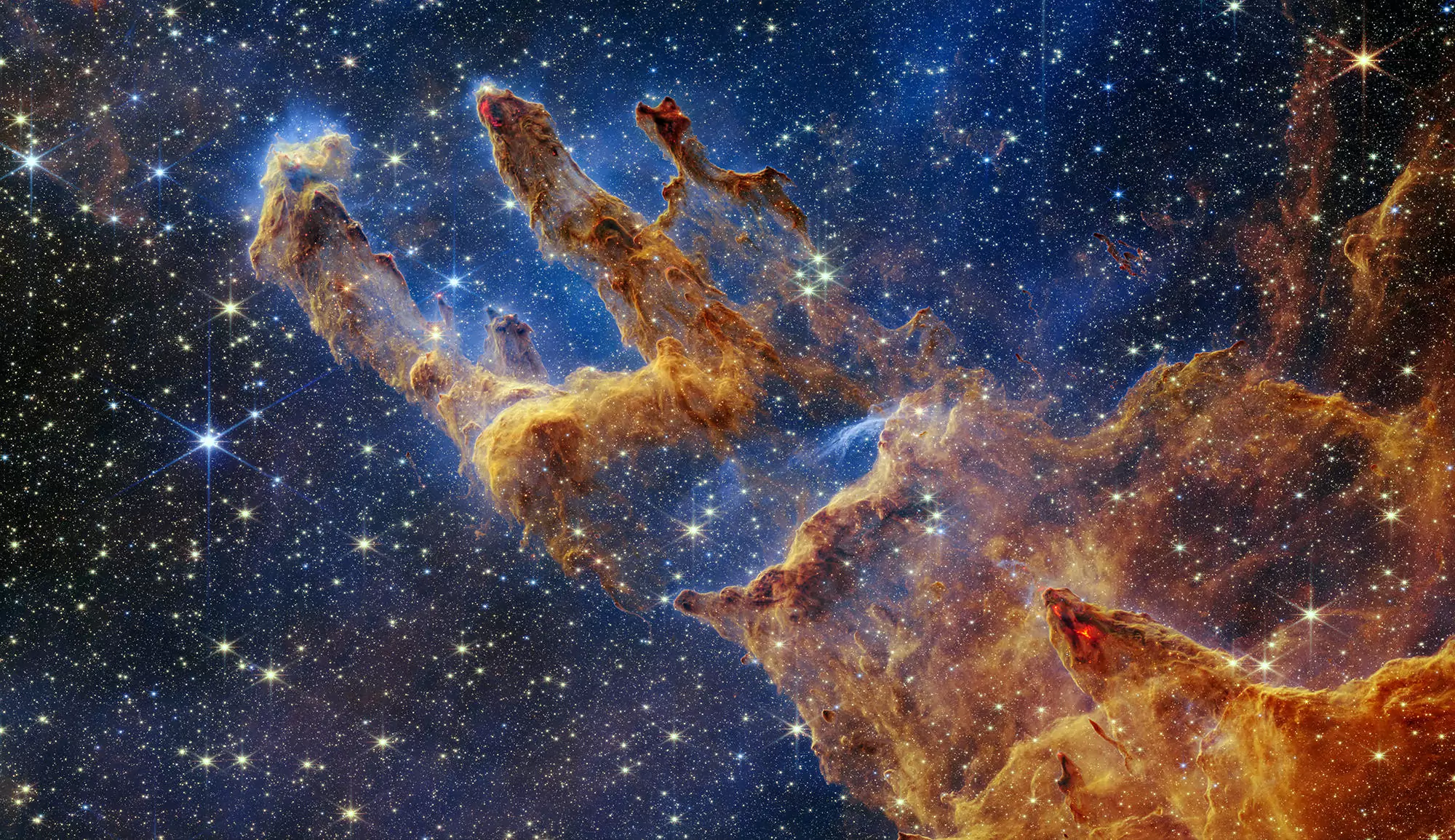If there’s one object in the Solar System where we wouldn’t expect to find liquid water, it’s undoubtedly Mimas.
Unlike its big sister Enceladus, the surface of Mimas is extremely cratered and inactive, showing no signs of subsurface activity. What’s more, Mimas is a modest moon (around 400 km in diameter), a size that doesn’t allow it to retain its internal heat for long.
![<multi>[fr]De taille similaire et orbitant à une distance semblable autour de Saturne, les lunes, Encelade (à gauche, diamètre d'environ 500 km) et Mimas (à droite, diamètre d'environ 400 km), ont des surfaces très différentes l'une de l'autre, qui semblent témoigner de conditions internes incompatibles. Pourtant, toutes deux abritent un océan d'eau liquide sous leur surface. [en]Similar in size and orbiting at a similar distance around Saturn, the moons Enceladus (left, diameter approx. 500 km) and Mimas (right, diameter approx. 400 km) have very different surfaces, which seem to reflect incompatible internal conditions. However, both contain an ocean of liquid water beneath their surfaces.</multi>](IMG/jpg/mimas1.jpg)
By studying the movement of Mimas’ orbit, using data from the NASA’s Cassini spacecraft, researchers were able to confirm the presence of an ocean beneath the satellite’s icy surface.
To arrive at this result, the researchers studied the effect of Mimas’ rotation on its orbit. Like most of the moons in the Solar System close to their planet, Mimas always shows the same side to Saturn. The satellite therefore rotates on itself at the same frequency as its orbital motion. In addition to this average rotation, Mimas is also affected by small oscillations, known as librations. It is precisely the feedback of these librations on orbital motion that the researchers studied.
By comparing the solution derived from numerical models describing Mimas’ orbit with observations provided by the Cassini probe, they discovered that the fine features of Mimas’ orbit can only be explained by the presence of a global ocean hidden beneath the satellite’s entire surface. What’s more, when combined with direct libration measurements, they were able to deduce that the thickness of Mimas’ ice shell is between 20 and 30 km, comparable to the thickness of Enceladus’ ice shell.
![<multi>[fr]Vue en coupe de l'intérieur de la lune Mimas, comprenant une coquille de glace, un océan d'eau global et un noyau de silicates.[en]Cross-section of the interior of the moon Mimas, comprising an ice shell, a global water ocean and a silicate core.</multi>](IMG/jpg/mimas2.jpg)
To determine the origin and age of this ocean, the researchers modelled the tidal effects caused by the planet Saturn on Mimas. The calculations showed that the birth of this ocean, dating from only 5 to 15 million years ago, was most certainly caused by the tripling of Mimas’ initial orbital eccentricity, under the gravitational influence of several of Saturn’s other moons. The onset of internal activity is therefore so recent that it explains why no signs of activity have yet been seen on the surface.
Mimas thus joins the very select club of moons with a global water ocean[[ The presence of an ocean beneath Mimas’s icy shell had already been suggested by the same team in 2014. It has now been demonstrated, as have the internal oceans of Jupiter’s moons Europa and Ganymede, and Saturn’s Enceladus and Titan.] It’s even the smallest of them all.
Unlike other moons where an ocean has already been detected, this is a nascent ocean, offering unique conditions for studying water-rock interaction processes as they may have existed in many bodies in the early solar system.
This discovery makes it a unique target for studying the primitive conditions in which life first appeared.
Video explanations
| "Mimas: in search of the hidden ocean" [duration : 6:28]
|
Reference
This research work is the subject of an article entitled "A recently-formed ocean inside Saturn’s moon Mimas" by Valéry Lainey (astronomer, Observatoire de Paris - PSL, IMCCE), Nicolas Rambaux (teacher-researcher, Sorbonne Université, IMCCE), Gabriel Tobie (CNRS researcher, Nantes Université), Benoît Noyelles (Maitre de conférence, Université Franche-Comté, Institut UTINAM) and Kévin Baillié (chercheur CNRS, Observatoire de Paris - PSL, IMCCE), Nick Cooper (Honorary Research Fellow, Queen Mary University of London), Qingfeng Zhang (Jinan University) published on February 8, 2024 in the journal Nature.
DOI : 10.1038/s41586-023-06975-9
https://www.nature.com/articles/s41586-023-06975-9
